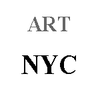Building a Second Brain
A proven method to organize your digital life and unlock your creative potential
Tiago Forte
Publisher: Profile Books
Published: 14 JUN, 2022

Table of Contents
Going in _ Second Brain, First Step to Innovation and Success
Part 1 From finite to infinite, the beginning of a new possibility
Chapter 1 Beyond Limits and Constraints
Chapter 2 Make Bigger Achievements Possible
Chapter 3 Remember, Connect and Create
Part 2 Principles of Knowledge Management from Consumption to Production
Chapter 4 Collect Resonant Content
Chapter 5 Arrange with the goal of implementation
Chapter 6 Find the key and extract it
Chapter 7 Express the outcome of your work
Part 3 Completion of the Creative Process from Potential to Influence
Chapter 8 Three Strategies for Creative Execution
Chapter 9 Three Habits for Efficient Execution
Chapter 10 Three Changes for Continuous Execution
Personal knowledge management is based on recent advances in personal knowledge management. Personal computers have revolutionized the relationship between humans and technology, personal finance has changed the way money is managed, and personal productivity has changed the way we work. Personal knowledge management also helps us maximize and leverage the potential of our knowledge.
The field of personal knowledge management, or PKM, first emerged in the 1990s to help college students efficiently handle the enormous amount of information encountered in Internet-connected libraries. This is a concept that corresponds to the field of knowledge management, which studies how a company or organization utilizes knowledge.
We don't spin our brains like machines or inflate them like muscles, but rather weave them into ideas after spraying them with rich ingredients in this world.
- Annie Murphy Paul, science journalist -
In order to properly utilize the power of the second brain, information, technology, and even relationships with oneself must be re-established.
For hundreds of years, numerous artists and intellectuals, from Leonardo da Vinci to Virginia Woolf, John Locke to Octavia Butler, have kept ideas that they thought were interesting in their notebooks. This is the memorandum commonplace book.
The memorandum served as a gateway for the intellectual community to interact with the world. They communicated with the help of the memorandum and inspired their thoughts by connecting piecemeal knowledge from other sources.
We can enjoy the same benefits by using modern records corresponding to past memorabilia.
It's time to add digital memos to our list of uses and leverage technology to strengthen our natural abilities.
Knowledge blocks are individual pieces. They exist independently and have their own values, but when combined, they can be reborn as much greater objects such as reports, proposals, and stories.
There are four key functions that you can expect the second brain to perform.
1. embody an idea.
2. It reveals a new link between ideas.
3. Take time to develop ideas.
4. Finely refine my own unique perspective.
Each step is collection Capture, Organize, Extract Distill, and Expression, which are simply called the 'CODE' method.
Every idea has a "coreness," which is the central content that you want to convey with all your heart. Thousands of words may need to be written over hundreds of pages to explain complex insights in an easy-to-understand manner, but there are also ways to convey the core message in one or two sentences.
Add a little every day to gain knowledge.
Throw away a little every day to gain wisdom.
- Let's play
The importance of memo apps.
Since we are humans, we are sensitive and sensitive to the way information is displayed. In a web design, the number of clicks on a button can change significantly by slightly changing its color or title. Imagine how you would like to display the information in your device like this. Text can be understood much more easily by simple processing, such as containing information in a title, separating paragraphs, or highlighting important phrases.
Picasso's method of extracting is to remove unnecessary parts so that only the essence remains. Importantly, he did not draw only one line from the beginning. He needed to examine the shape of the bull step by step to absorb and remember the proportion and shape of the bull through his body. The result was a mysterious aspect of the creative process.
There is only one purpose of effort in the step-by-step summary. It is to find and utilize notes easily in the future. In fact, doing more when we think and create something does not necessarily mean that it is good. By extracting the core, you can make the idea small and concise, and load it into your head with minimal effort.
Creative products are always shiny and new,
The creative process is old and unchanging.
- Silvano Arrietti, author of "Creativity" -
This is the checklist you use to start the project.
1. Collect: Collect my thoughts on the project.
2. Review: Review folders or tags that may have relevant notes.
3. Search: Search all folders for relevant terms.
4. Move: Move related notes to the project folder or set a tag.
5. Write: Write an outline with the notes you collected and plan your project.
The important thing to remember when checking this checklist is the first procedure that must be completed within 20 to 30 minutes.
Right now, you're not executing a project, you're planning a project progression plan.

![[100 Challenge] DanJi’s reading note_100](http://artnycnewyork.com/cdn/shop/articles/IMG_4245_1100x.jpg?v=1709754699)